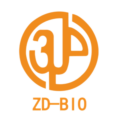Ethyl lactate has good solubility and can dissolve a variety of resins, pigments and additives, so it can be used as a solvent in coating formulations. Compared with traditional organic solvents, it has a relatively moderate evaporation rate. With the increasingly strict restrictions on volatile organic compounds (VOCs), ethyl lactate, as a low-toxicity, low-odor and biodegradable solvent, helps to reduce the overall VOCs emissions of coatings, which meets the requirements of environmental protection. For example, in some indoor coatings with high environmental protection requirements, using ethyl lactate to replace part of the traditional aromatic solvents can effectively reduce the indoor odor and improve the air quality. Meanwhile, during the application process, its evaporation characteristics contribute to the uniform film formation of coatings, avoiding defects such as poor leveling and orange peel caused by the too rapid evaporation of solvents, making the coating surface smoother and flatter and improving the decorative effect.
Film-forming Aid
In waterborne coating systems, ethyl lactate is an effective film-forming aid. The polymer emulsion particles in waterborne coatings need to fuse with each other to form a continuous film during the film-forming process, and this process often requires certain conditions, especially an appropriate temperature. Ethyl lactate can lower the minimum film-forming temperature (MFT) of polymer emulsions. By interacting with emulsion particles, it enables the particles to have sufficient fluidity and deformability at lower temperatures, thus facilitating the smooth progress of the film-forming process. This allows waterborne coatings to form complete and dense films even under adverse application conditions such as low temperature and high humidity, improving the application adaptability and coating quality of waterborne coatings and ensuring their application effects under a wider range of environmental conditions. For example, in exterior wall coatings for buildings, even in the spring and autumn seasons when the temperature is relatively low, waterborne coatings containing ethyl lactate as a film-forming aid can still form good films, providing effective protection and decorative effects, and the properties such as water resistance and weather resistance of the films are not significantly affected.
Improvement of Coating Properties
- Enhancement of Gloss
Ethyl lactate can improve the leveling performance of coatings, reduce the surface tension gradient during the film-forming process of coatings, and make the coating surface more uniform and flat, thereby significantly increasing the gloss of the paint film. In coating products with high requirements for gloss, such as high-end furniture coatings and automotive coatings, adding an appropriate amount of ethyl lactate can make the coating present a high-gloss appearance, enhancing the aesthetics and market competitiveness of the product. For example, in automotive refinish coatings, using coating formulations containing ethyl lactate can achieve a gloss similar to that of the original factory paint on the repaired body surface, improving the quality and appearance of the repair. - Improvement of Adhesion
The polar groups in its molecular structure can react chemically with or form hydrogen bonds with the active groups such as hydroxyl and carboxyl groups on the surface of the coating substrate, thereby enhancing the adhesion between the coating and the substrate. Whether it is a metal substrate (such as steel, aluminum alloy, etc.), a wood substrate or a plastic substrate, coatings containing ethyl lactate can exhibit better adhesion, effectively reducing the occurrence probability of problems such as coating peeling and flaking. In industrial equipment protective coatings, good adhesion can ensure that the coating continuously plays a protective role during long-term use and resists the erosion of the external environment on the substrate, prolonging the service life of the equipment. - Improvement of Flexibility
For some coating application scenarios that require flexibility, such as leather coatings and coil coatings, the addition of ethyl lactate can make the paint film have better elasticity and toughness. In the surface coating of leather products, coatings containing ethyl lactate can deform along with the bending and stretching of the leather without cracking or breaking, maintaining the integrity and decorative effect of the coating; in coil coatings, when the coil undergoes operations such as curling and bending during processing, transportation and installation, the coating with good flexibility can effectively prevent damage and ensure the performance and appearance quality of the coil.
